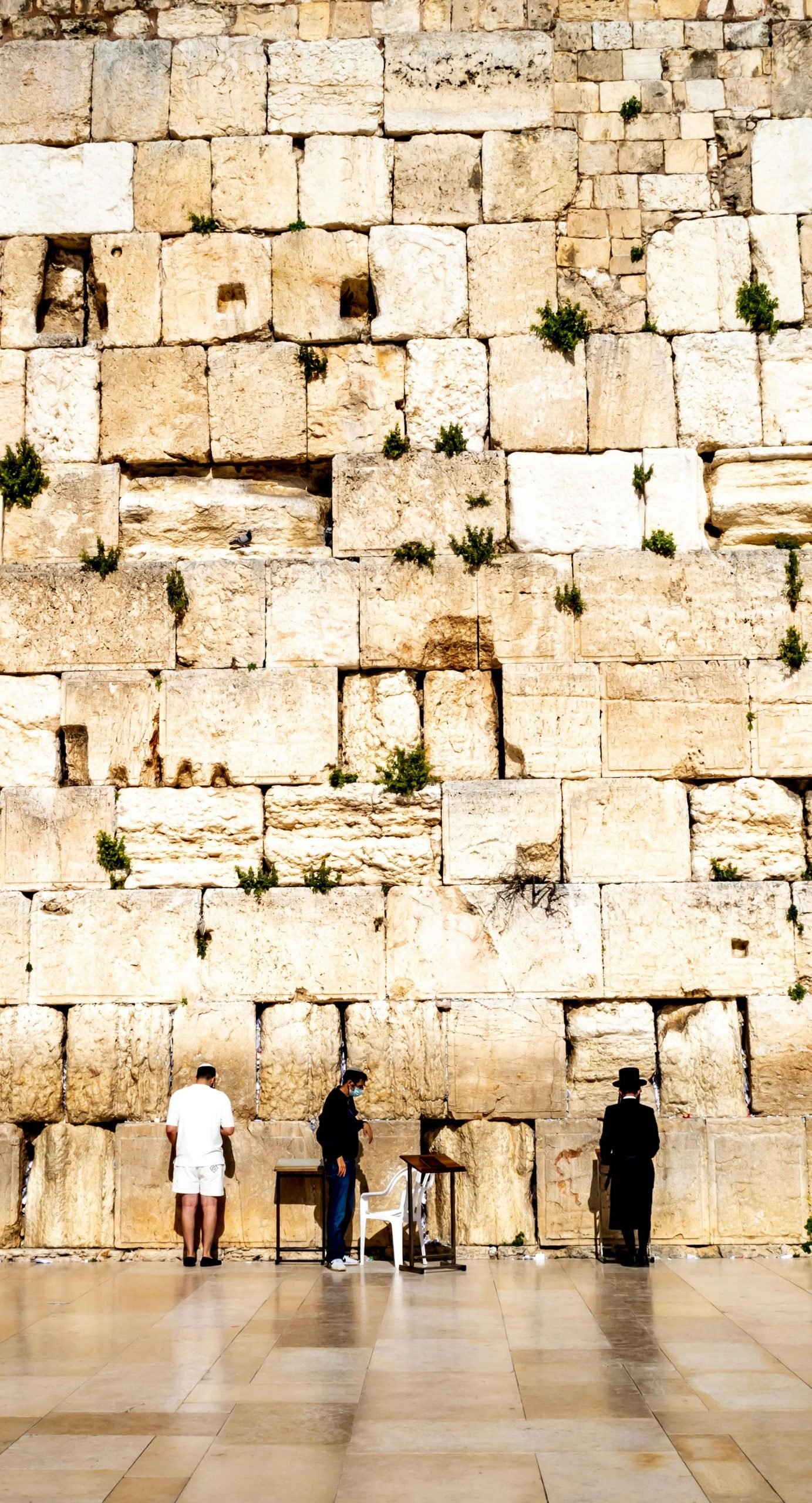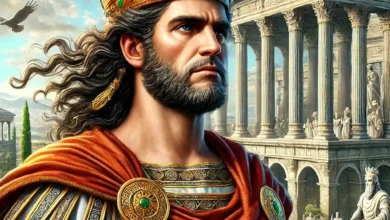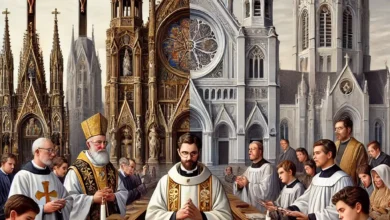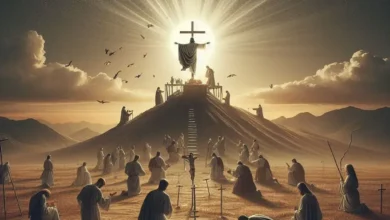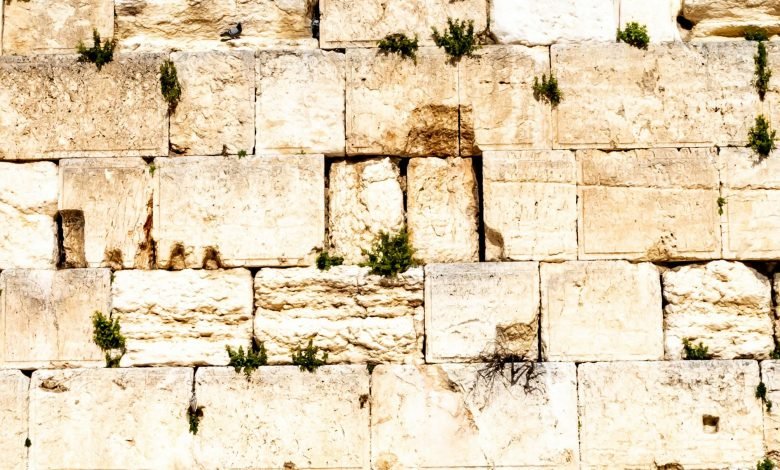
What is the Wailing Wall in Jerusalem?
The Wailing Wall, also known as the Western Wall, plays a central role in more than one religion. So what makes it so historical?
During the weekend of April 2023, a rather rare event occurred in Jerusalem. Thousands of representatives from the three major world religions gathered at a place of special significance to them to celebrate their holy days. For Christians, this was Easter—a time when many people travel from around the world to see the places where it is said that Jesus Christ was crucified, buried, and rose from the dead.
For Jews, it was Passover—a yearly reminder of how God saved His people from slavery in Egypt. For Muslims, it was part of Ramadan—a time of prayer and fasting that commemorates when they believe God gave the Quran to the Prophet Muhammad. This convergence of holidays occurs approximately every 30 years.
During their trip to Jerusalem, many people visit a place of tremendous significance for all three religions: the Western Wall, also known as the Wailing Wall. Even if you don’t know much about it, you have likely seen images of Orthodox Jews bowing and praying in front of a large limestone wall. But why that place?
Read more : Who are the Meek? Why did Jesus say “Blessed are the Meek”?
فرست محتوا
What is the history of the Wailing Wall?
To understand the significance of the Wailing Wall, we need to go back to the beginning of the history of the Jewish people. When God called Abraham into a covenant with Him, He tested Abraham’s faith by asking him to sacrifice his son Isaac. Of course, God provided another sacrifice, Isaac was saved, and the Jewish nation began through Abraham’s bloodline. The place where this exchange of sacrifice occurred was Mount Moriah.
David wanted a temple for God to be built on Mount Moriah (although God called Solomon to build it). With the placement of the First Temple (also known as Solomon’s Temple), the site became known as the Temple Mount. The highlight of Solomon’s reign was the completion of the First Temple.
When the Babylonians attacked Jerusalem in 605 BC, Solomon’s Temple was destroyed, and the Jews were captured and exiled to Babylon—men like Daniel, Shadrach, Meshach, and Abednego. Sixty-six years later, the Medo-Persian Empire defeated the Babylonians and allowed the Jews to return. They were very old by then, but Daniel and his friends might have been among those who returned to Jerusalem.
Don Greaves describes what happened when the people returned to Jerusalem and built the Second Temple:
In 539 BC, Babylon fell to the Medo-Persian coalition. The new rulers of the Middle East pursued a policy of returning captive nations to their homelands. The Jews were among these captives. They returned to Judah with permission to rebuild their temple. Seventeen years later, construction was still slow, and God raised up the prophets Haggai and Zechariah to rebuke the neglect of His house.
In 520, Haggai preached: “Is it a time for you yourselves to dwell in your paneled houses while this house lies in ruins?” God, through Haggai, asked the Jews how their circumstances had been since their return. “You have sown much and harvested little. You eat, but you never have enough;
you drink, but you never have your fill. You clothe yourselves, but no one is warm. And he who earns wages does so to put them into a bag with holes” (Haggai 1:6, ESV). Haggai said that God wanted them to bring wood and rebuild His house. The political and religious leaders of Judah listened. Under their leadership, the remnant of exiles who returned to Israel rebuilt God’s house, which was completed on this day, March 12, 515 BC, though it was not very impressive.
“Is it as nothing in your eyes?” God asked them. Well, they should not think so. His Spirit was with them. A day was coming when God would shake the heavens and the earth, the sea and the dry land. God promised: “I will fill this house with glory.” God said: “The latter glory of this house shall be greater than the former.” He promised: “From this day on, I will bless you.”
The temple rebuilt in 515 BC was later reconstructed by Herod the Great, who rebuilt it with stone and covered it in gold. This was the temple that Christ visited during His lifetime and brought glory to. One generation after Christ’s death and resurrection, Herod’s Temple was destroyed by the Romans. Now, a mosque stands on its platform.
Haggai also prophesied that all nations would bring their treasures to the temple. This event has not yet been fulfilled. It awaits another temple when Christ returns to reign from Zion on earth.
When was Herod’s Temple built?
Returning to Israel did not mean Jewish self-rule. They were conquered by one kingdom after another for hundreds of years. Fast forward to 37 BC, while Israel was under Roman rule, and King Herod was appointed as the local ruler of Judea.
“He is known for his massive building projects throughout Judea, including the rebuilding of the Second Temple in Jerusalem,” Graves explains in an article about what became known as Herod’s Temple. This location was the Temple Mount, where Solomon’s Temple once stood, but the Wailing Wall was not part of Solomon’s design. When Herod was improving the first rebuild, he expanded the Temple Mount’s platform, including this western retaining wall.
Why did the Romans destroy Herod’s Temple?
In AD 66, the Jews of Jerusalem could no longer bear Roman rule, taxation, and persecution. They united and successfully expelled the Romans from the city, but the superpower did not relent. The ESV Study Bible explains the events leading up to this Great Revolt and its aftermath:
“Politics in Judea after Herod the Great continued to be dominated by Rome. Herod’s last will was ratified by Augustus, and Herod Antipas was placed over Galilee and the northern territories (4 BC–AD 39), Herod Philip over northern Transjordan (4 BC–AD 34), and Archelaus over Judea (4 BC–AD 6). The Romans, judging Archelaus’ rule to be inadequate, removed him and replaced him with a series of Roman governors over Judea.
The most famous of these governors was Pontius Pilate (who governed from AD 26 to 36), who was much despised for his autocratic behavior. Roman favor allowed Herod’s grandson, Agrippa I, to rule over Judea for a brief period (AD 41 to 44), but his early death again placed Judea under Roman governors. The Jewish historian Josephus graphically depicts the unwise and often brutal actions of these governors.
Eventually, resentment against Rome led to the Jewish Revolt (AD 66 to 73/74). The Romans could not tolerate rebellion in any of their territories, let alone a key trade center like Palestine. Thus, Vespasian and his son Titus (both future emperors) were sent as generals to crush the revolt, which they did with precision and ruthlessness. The destruction of Jerusalem and the Jewish Temple (AD 70) forever changed Judaism.
Following this, the suppressed Jewish Diaspora uprisings (especially in Egypt, AD 115 to 117) occurred during Trajan’s reign. Some Jews hoped to rebuild the Jerusalem temple, but the futile Second Jewish Revolt in Judea under Bar Kokhba (AD 132 to 135, during Emperor Hadrian’s reign) instead resulted in the Jews being banned from Jerusalem and a temple to Zeus being built on the former Temple Mount.
Years of growing Jewish resentment toward Roman rule and idolatry eventually erupted into full-scale rebellion in AD 66. This revolt began in Caesarea and quickly spread to Jerusalem, Judea, Idumea, parts of Samaria, and Galilee. The following spring, the Roman general Vespasian began a systematic campaign to suppress the rebellion, starting in Galilee and then moving south to Samaria and along the coast.
Meanwhile, Jewish forces, embroiled in a bitter power struggle among various zealot factions and aristocratic leaders, began to fight each other, weakening their ability to repel the advancing Romans into Judea. In AD 70, the Romans captured Jerusalem and destroyed the Temple, but scattered resistance continued even until AD 73 when the stronghold of Masada finally fell to the Romans.
The Romans destroyed the city and the temple but left a large part of the limestone Wailing Wall standing. This site became famous as the Western Wall or the Wailing Wall.
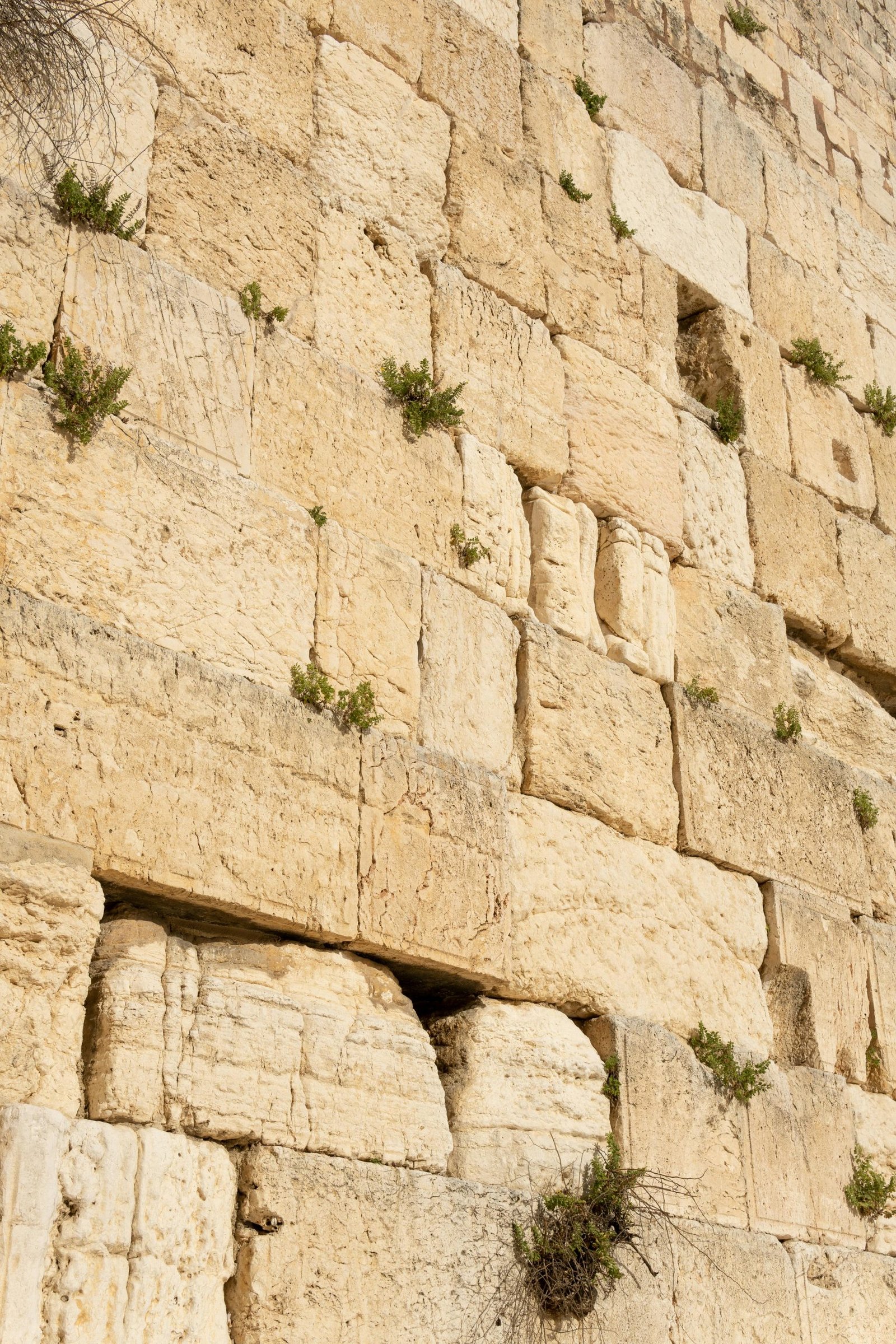
What is the significance of the Wailing Wall?
In a recent interview with BBC News, Rabbi Shmuel Rabinowitz, the Rabbi of the Wailing Wall, explained its significance:
“…The Wailing Wall is the closest place to the holiest point of the Temple, where all the prayers of all Jews worldwide rise to heaven.”
If you visit the Wailing Wall, you will see people praying, crying out prayers, and wailing and crying to God. Rabinowitz said there is also a 300-year-old tradition of people writing their prayers and placing them between the wall’s stones.
According to Leen Ritmeyer, the foremost authority on the Temple Mount, the Western Wall is rarely called the Wailing Wall today. He confirmed that this location, between Wilson’s Arch and Barclay’s Gate, is the retaining wall of Herod’s Temple.
Why is the Wailing Wall important for Muslims and Jews?
Again, due to its proximity to the holiest point of God’s Temple, Jews believe they are standing on holy ground near the Wailing Wall. On the other hand, Muslims have an entirely different history with the Wailing Wall. Muslims conquered Jerusalem in 638 and built the Al-Aqsa Mosque and the beautiful golden Dome of the Rock near the Wailing Wall.
They call the location the Buraq Wall because, according to their tradition, the prophet Muhammad tied a magical horse named Buraq to the wall before ascending into heaven to meet with Allah. Islam also teaches that Allah changed the original place of worship from the temple on the Temple Mount to the Al-Aqsa Mosque, making this area particularly holy for Muslims.
This means that for many centuries, Jerusalem has been a holy city for three different religions. When people from all three visit Jerusalem to worship, they find a common gathering place to cry out to God for help and deliverance. They come to the Wailing Wall for prayer.
What did Jesus say about the Temple Mount?
When Jesus walked the earth, He visited the Temple on the Temple Mount, worshipped there, and attended festivals there. In His famous Olivet Discourse in Matthew 24, Jesus told His disciples that one day, the temple would be destroyed.
As Jesus left the temple and was going away, his disciples came to point out the buildings of the temple. But he answered them, “You see all these, do you not? Truly, I say to you, there will not be left here one stone upon another that will not be thrown down.” As he sat on the Mount of Olives, the disciples came to him privately, saying, “Tell us, when will these things be, and what will be the sign of your coming and of the end of the age?” (Matthew 24:1–3, ESV)
Jesus wept over the temple, lamenting that He wanted to gather the children of Jerusalem under His wings as a hen gathers her chicks (see Luke 13:34). He also overturned tables in the temple to drive out moneychangers who had turned His house of prayer into a den of robbers (see Luke 19:46).
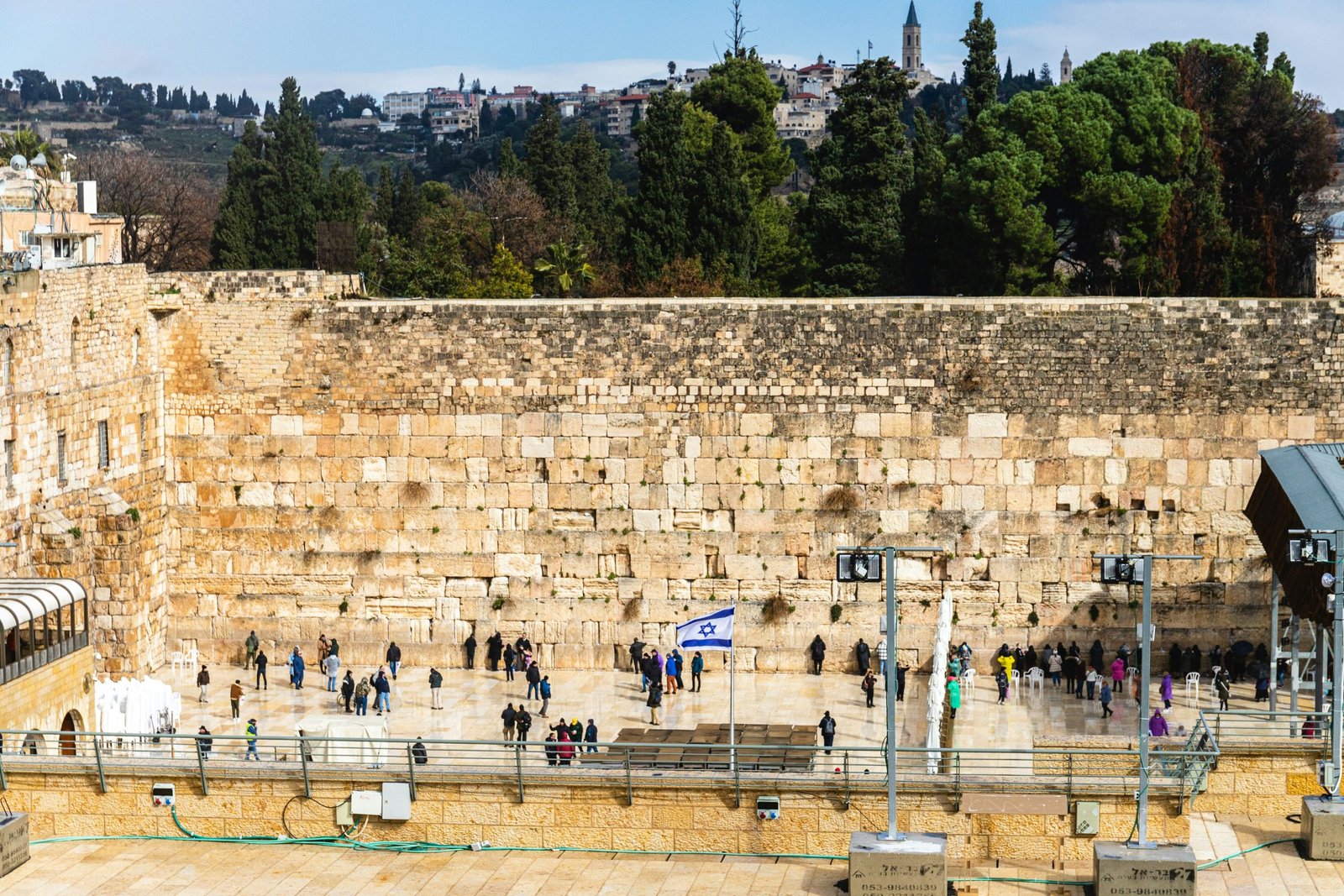
How can you pray like Jesus?
The next time you see images of the Wailing Wall in Jerusalem, remember that God has a plan to fill the earth with His glory. Many people in our world are crying out to God for help in the midst of trials and tribulations. And God hears them.
Consider praying for the peace of Jerusalem. You might also have family or friends you can pray for who need God’s help in some way.
Know that God can hear your prayers wherever you are, and Jesus is now at the right hand of God, interceding for you. We know that God hears the cries of His people and will one day send Jesus to rescue us from this world to live with Him forever.
Do you want to know how you can be sure that Jesus will hear you and save you? Learn how you can know that Jesus is the way, the truth, and the life, and no one can come to God the Father except through Him. Call on Jesus today for your salvation. He will hear you!
And pray for those visiting the Wailing Wall, that their eyes may be opened to the true temple that Christ is building in heaven for those who believe in Him.


